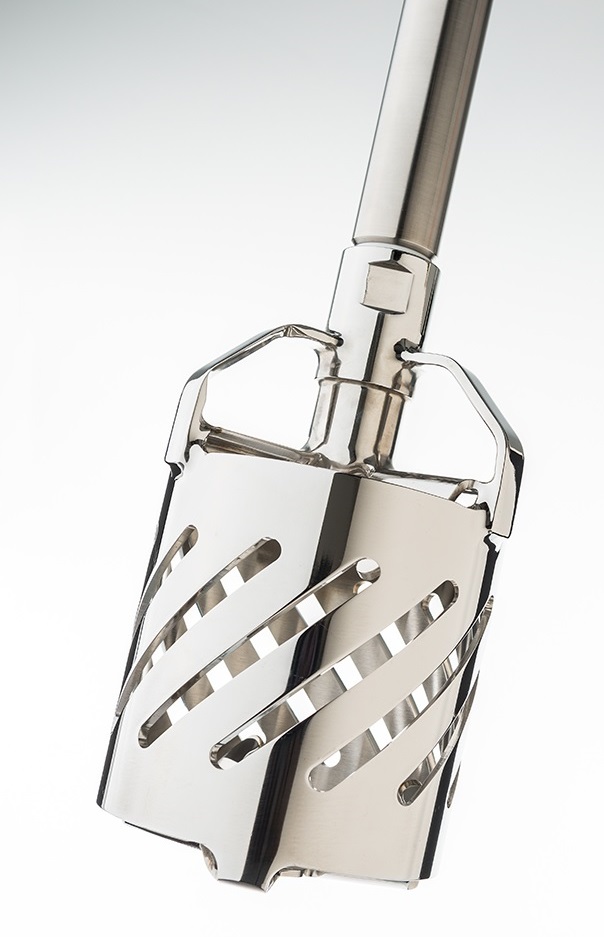Mixing & Dispersing Alginate | Processing Alginic Acid
By George Nikolopoulos, Regional Sales Manager
 Alginates are salts of the long-chain, carbohydrate biopolymer alginic acid. They are extracted from various species of brown algae (seaweed) and purified to a white powder. The alginates have different characteristics of viscosity and reactivity based on the specific algal source and the ions in solution. Alginic acid is insoluble, but the salts are hydrocolloids (materials that bind or absorb water). The common salts used in the food and pharmaceutical industries are sodium alginate, potassium alginate, and propylene glycol alginate.
Alginates are salts of the long-chain, carbohydrate biopolymer alginic acid. They are extracted from various species of brown algae (seaweed) and purified to a white powder. The alginates have different characteristics of viscosity and reactivity based on the specific algal source and the ions in solution. Alginic acid is insoluble, but the salts are hydrocolloids (materials that bind or absorb water). The common salts used in the food and pharmaceutical industries are sodium alginate, potassium alginate, and propylene glycol alginate.
Alginates are generally acid stable and heat resistant. Adjusting the concentration of calcium ions (which cause crosslinking), controls gel strength, and combining alginate with other gums, such as pectin, increases viscosity dramatically.
Featured Products
 Dispersing low concentrations of alginate is usually easy in ambient temperature water, but hard or very cold water makes it more difficult. Alginate concentrations above 2% require high shear mixing to eliminate clumps and fisheyes. Both the Rotosolver and Rotostat are ideal for in-tank processing to quickly dispersing alginate without forming clumps. These sanitary high-speed mixers combine high flow with high shear to increase mixing efficiency and productivity. For your inline powder induction and dispersion requirements, learn more about the Fastfeed and Dynashear.
Dispersing low concentrations of alginate is usually easy in ambient temperature water, but hard or very cold water makes it more difficult. Alginate concentrations above 2% require high shear mixing to eliminate clumps and fisheyes. Both the Rotosolver and Rotostat are ideal for in-tank processing to quickly dispersing alginate without forming clumps. These sanitary high-speed mixers combine high flow with high shear to increase mixing efficiency and productivity. For your inline powder induction and dispersion requirements, learn more about the Fastfeed and Dynashear.
Common Uses
Alginate is popular as a thickener, stabilizer, emulsifier, coating and gelling agent in several applications:
- used by printers in inks and textile dyes
- pharmaceutical manufacturers use as a binder or time-released agent to produce gelcaps, active encapsulants, film formers in antacids, or dressings along with CMC
- beverage processors use it to add body and stabilize foam
- to thicken and stabilize salad dressing emulsions
- to add body and prevent crystal growth in ice cream
- form gels for jellies and pie fillings
- to improve texture and hunger satisfaction in low calorie formulations
- to hold moisture and keep baked goods fresh
Featured Video
See how the Rotosolver high shear mixer quickly and efficiently creates a smooth slurry from carboxymethyl cellulose (CMC), often combined with alginates to produce pharmaceutical dressings.


 Jesper Sæderup Lindeløv, Managing Director
Jesper Sæderup Lindeløv, Managing Director Knud Erik Juhl Jensen, General Manager, Admix Europe ApS
Knud Erik Juhl Jensen, General Manager, Admix Europe ApS
 Patrick Lakin, Director of Sales and Marketing
Patrick Lakin, Director of Sales and Marketing Kara Martakos, Human Resources Director
Kara Martakos, Human Resources Director Keith Cheries, Director of Sales Operations
Keith Cheries, Director of Sales Operations Eric Therriault, Vice President of Engineering
Eric Therriault, Vice President of Engineering Bob Trottier, Vice President of Operations
Bob Trottier, Vice President of Operations Dan Cameron, Chief Financial Officer
Dan Cameron, Chief Financial Officer Mike Rizzo, Chief Executive Officer
Mike Rizzo, Chief Executive Officer